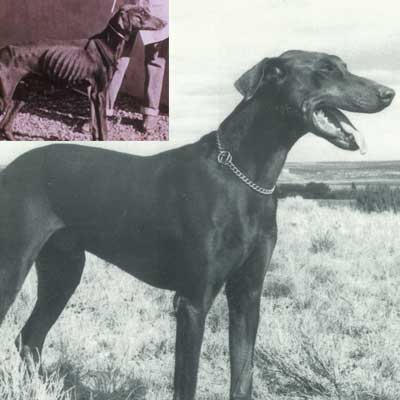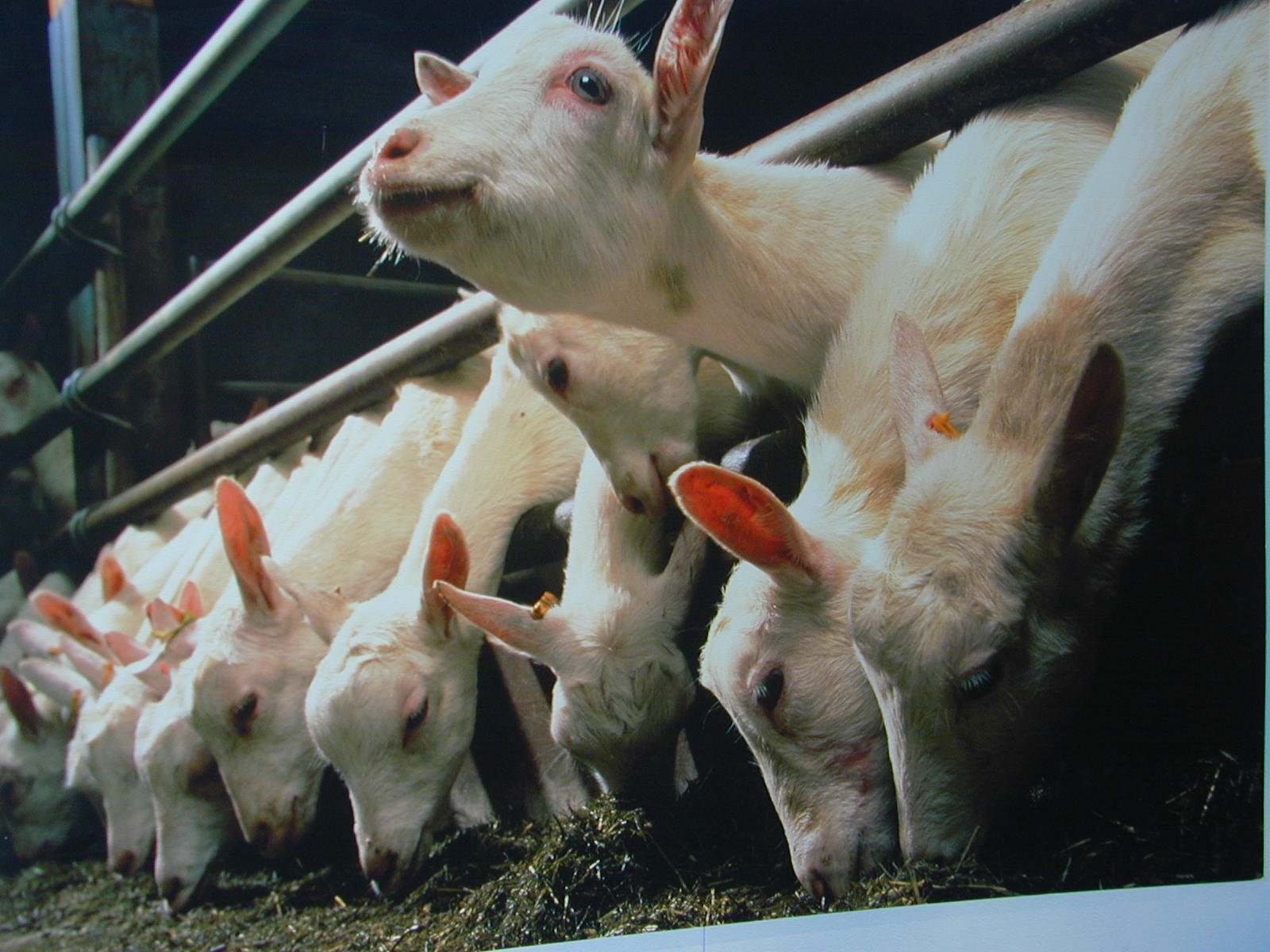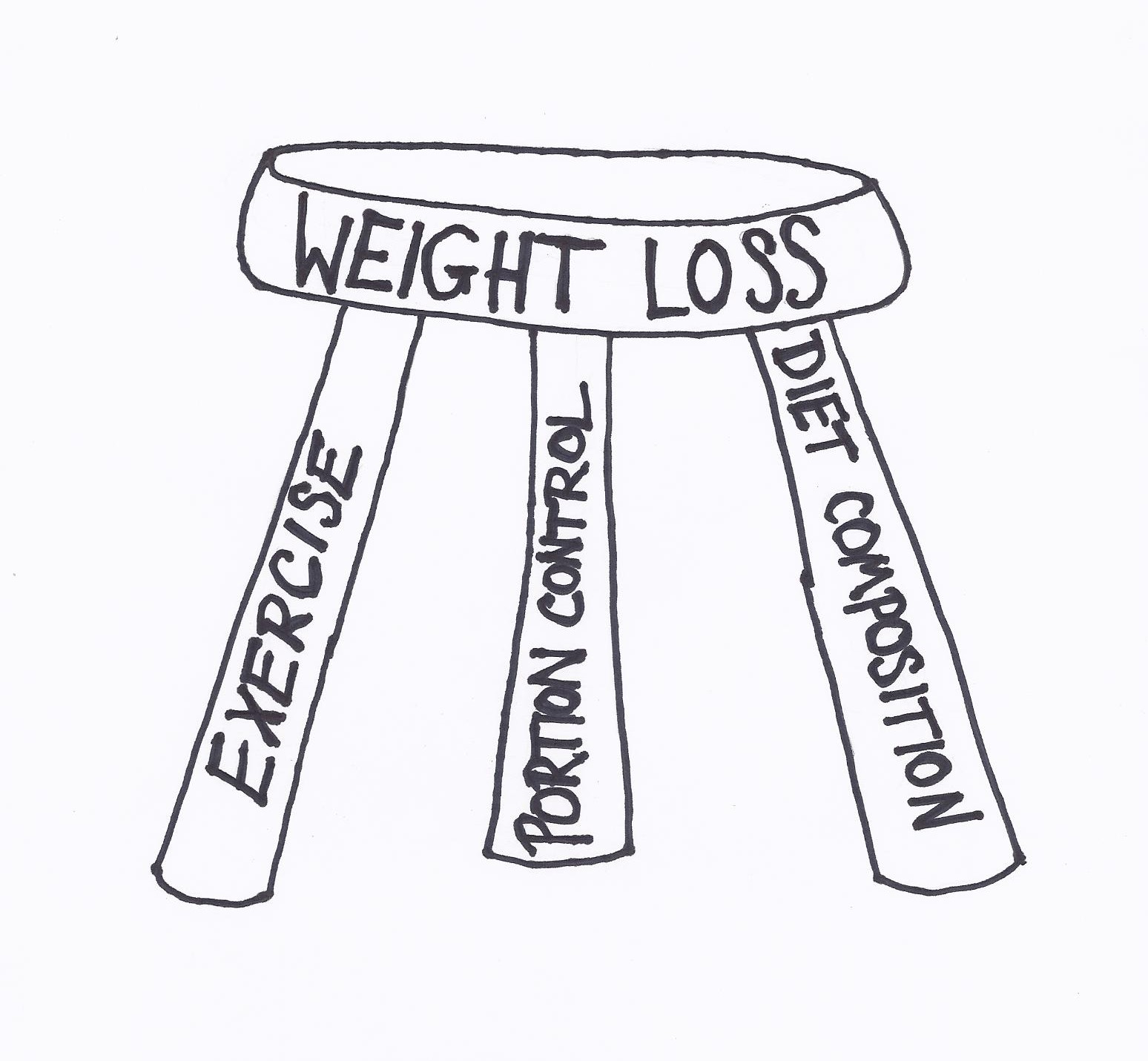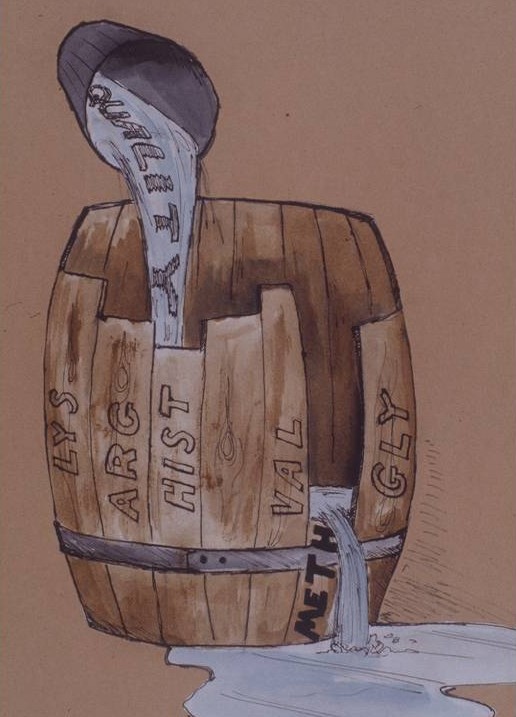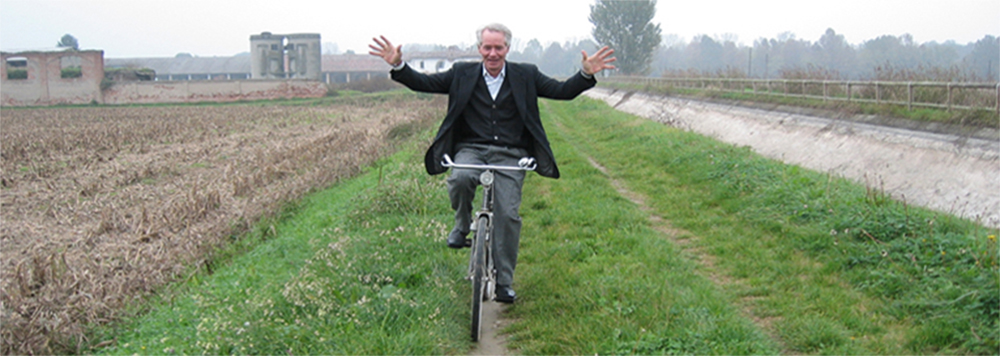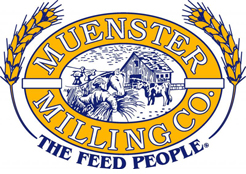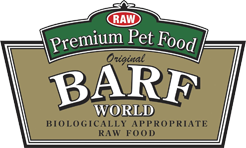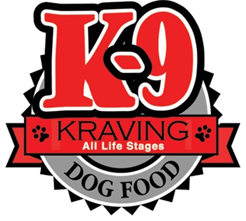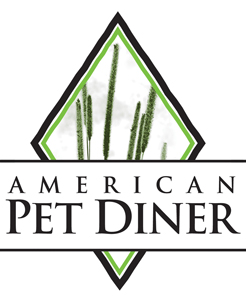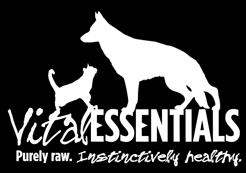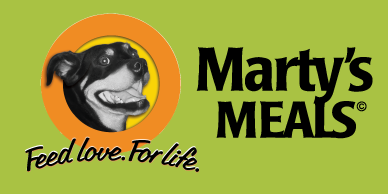In the beginning. Animal nutritionists are invariably ag school graduates. We don’t talk much about our ag school system anymore, but it was a driving force is America’s rapid rise to prominence in world commerce. In the 1860’s our government authorized the Morrill Land Grant Act, setting aside land in each state for a school for agriculture and engineering (Cornell, Penn State, Kansas State, etc.). This was soon followed by the creation of an Ag Extension Service, intended as a conduit for tech transfer. Today, the extension agent is less of a factor in our lives, but most emerging economies today are striving earnestly to duplicate our Ag Extension Service. For us it was a very effective method to spread the word about new technology. However, it became evident to me years ago that the extension agent was a hound dog running for his supper. I was a rabbit running for my life. If my advice didn’t make money for my client, I was invited to leave, and I was no longer paid. If an extension agent’s advice is inept, he still gets paid. From early in our history as a player on the world stage, tech transfer in agriculture was a fundamental component of our dynamic growth. As the livelihood called farmer advanced and began to specialize, dairymen were instrumental in perfecting the tech transfer dialogue as a two way discussion. A hired consultant is a small but critical improvement over the government employee, a long standing pillar of the system.
Just what is a nutritionist?Many nutrition consultants hold an advanced degree or Ph.D. This tells us something important, but also usually overlooked. The reason they call someone doctor is because his brain is scarred. This is not as judgmental as it seems at first, as any intense experience scars the brain, in keeping with the saying, “as the twig is bent, so grows the tree.” Ph.D.’s are trained by professors, who teach and do research, and have a particular outlook on life, shaped by living in the scientific process. Science as a learning method is carefully and rigidly codified to look the fallibility of human judgment in the eye. As a profession, science unavoidably invents experts, who have a tendency sometimes to be overbearing about how the discipline works. Admittedly, it is a process, meaning it is never ending. No fact is ever safe for long. Sooner or later, in the relentless quest of the truth, every fact must be at least modified or even abandon. The last sentence of every research paper is “more research is needed.” But consultants who don’t grow beyond the culture of their training will be less effective. Dairymen have little use for this outlook. They need answers now, not more researcher later.
What you want first in a nutrition consultant is someone who has seen it before. Consultants don’t do anything for you that you couldn’t do for yourself. It’s just that because they do only nutrition, all day, they have more experience than you, who must do many things each day. They have seen it before. Secondly, a consultant ought to show a pretty evident measure of humility. The truth can come from anywhere (even a veterinarian!). Nobody is right all the time. You and your consultant working together will have a higher batting average than either alone. Be skeptical of a consultant who will not make room for another consultant’s opinion. If a client and I are struggling with a problem, I welcome another’s input. If I can’t defend my recommendations when challenged by another expert, my client has the wrong consultant. Alternatively, if another has more informed insight, my client needs to know it. My foremost mission is promoting your economic success, not my ego.
A dairyman’s brain is scarred too. I was at a dairy meeting years ago in discussion with some local producers, and handed each a business card, which seemed to me the appropriate things to do. One of them took my card, and with a smirk on his face, started picking his teeth with my card. I guess he thought he was being cute. Fortunately, most dairymen are more adult than this, and recognize a useful role for support people in the industry. A professional salesman can be a very helpful partner in your success. Everyone must be willing to run a check on their attitude from time to time, as well as the collective mindset of their industry.
For example, some years ago there was a charming billboard advertisement along a highway in Chino California, a high producing dairy shed. The ad was a picture of a pretty blond woman wearing only a big cottage cheese container, invoking the image of some guy who lost everything in a poker game, and had to sneak home wearing a barrel to hide his nakedness. The words on the billboard said simply “Bikini Season Is Coming.” Cottage cheese is an excellent food, included in many weight loss diets, and I thought the ad a very clever promotion for our industry, catching the attention of both men and women, each for different reasons. The Chino dairy wives had the ad removed—they thought it was too risqué. I think that was a mistake.
Speaking of attitude, industry managers can sometimes cite prudence when it is more correctly lack of perspective. The National Dairy council denied a request of mine for research funds to prove ice cream made with fructose was an improvement over ice cream made conventionally with sucrose. Ice cream is quite low on the glycemic index and much less fattening than commonly perceived. If made with fructose, it is lower still, and even better. The explanation for the rejection was that they didn’t want to give people the idea that there was anything wrong with ice cream the way it is. Thinking like this is counterproductive. There is too much of it in the dairy industry, at all levels. How many times have you been to a dairy meeting where a frequent topic of discussion was the low price of milk? Then at lunch, all the dairymen go through the buffet and select tea as their drink. It is a curious attitude to complain about the lack of demand for milk and not demand it yourself.
Conflict of interest, or is it? Some consultants sell a mineral supplement, in addition to providing advice. I have had dairy clients tell me the reason they hired me was because I didn’t sell anything. I have also had clients tell me they were going to buy a mineral pack from someone and they’d just as soon buy from me. This point of view speaks to the more important part of the dairyman-nutritionist relationship, which is trust. Whether or not your consultant sells a supplement is irrelevant if he is up front about it and mutual trust is part of the relationship. The same pertains to feed mill nutritionists or any other individual in a company that offers nutrition advice with a product they sell. If they are experienced professionals who put your best interest first, the only qualifier is the price of their service. This we’ll discuss in a moment.
What I’ve learned about consulting that you should consider. Early on in my career I learned one of the most important rules of being a consultant. A dairyman I was working with was running both heifers and cows in the same pen. I launched into a lecture of all the reasons why he should do things differently. He listened patiently. When I was finished he calmly explained to me why they did things their way. His reasons were better than mine. As a consultant, first you ask why things are done, and then you listen and hear what is being said. People have very good reasons for doing things the way they do. They have learned by trial and error, often at great expensive, how best to get things done in their circumstances. If you would suggest a different method, your reasons must be better than theirs, and how can you know their reasons if you don’t ask. When I learned this lesson, my effectiveness improved.
The other side of this coin teaches lessons too. I learned to ask the same question repeatedly, in slightly different words.The first time you ask a question, people tend to reply with what they think is the most direct answer. The next time, they include some additional information, considered irrelevant to them, which is why they didn’t mention it the first time. Then, they may tell you what they think you need to hear, or what they think you want to hear, or what the accountant taught them to tell people. Eventually, a more complete picture starts to emerge, and often it is rather different than what you were told at first. All the clues needed to solve a mystery are usually right before your eyes; you just need to see them clearly, interpret them correctly, and get past the brain scarring. And one thing we all know for certain, the cow doesn’t care who she tells the truth. Handicapping the thought process is not a behavior unique to dairymen, it is a reality of the human condition. What your consultant needs from you is facts, not your interpretation of the facts.
Who is in charge. There is a situation I encounter at least fifty percent of the time on a dairy, and it is found everywhere in the world. It is what I call the father-son estate dilemma, or the question of who is in charge. Sometimes, the sons complain that dad is in the way. He won’t let them adopt improvements, or borrow money, or hire more help. Just as frequently, dad complains the kids won’t apply themselves, or won’t pay attention to important tasks. It amuses me how often I found the son who loves machinery in charge of the cows while his brother who loved cows was running the farming. There are numerous solutions to such conflicts, but one attitude must be addressed by all. Parents are obligated to get their kids into adulthood with all their fingers and toes, avoiding jail if possible, and functioning as contributing members of society. They owe them nothing more. Not a college education, not an inheritance, and certainly not a farm. Naturally, any parent wants to help their children as much as possible, and make it easier for them than they had it themselves, but too much security is not good for anyone. As Abe Lincoln said, you never much help anyone by doing for them what they ought to do for themselves.
Work hard your whole life, for what? Let’s consider this matter in a broader sense. What we are talking about is succession, what is to become of the fruits of your lifetime of dedication. This first requires a moment to consider the future of our industry in general. Here the news is good. There will be milk. For several reasons. It is a perfect food. As a matter of fact, it is the only thing we eat that was designed by evolution specifically to be nourishment. Anything else we eat is nourishment almost by happenstance. It wasn’t created for our sustenance, but incidentally serves as such. Just as importantly, the ruminant is ideally positioned to endure in our culture. The ruminant can convert things useless to mankind into very valuable food. Don’t just think coastal hay and alfalfa, but cottonseed, cottonseed meal, dried bakery waste, and spent brewers grain. Think straw, and sagebrush, even newspaper. Long after the chicken and pig have been shoved aside by urban sprawl, the cow will be thriving on the steppes and plains of the world, converting captured energy from the sun into human food. The chicken and pig compete with man, needing the same food, and land, that people need. Not so for the cow. The cow’s future is more secure. Of course the cow eating brush will not give 120 pounds of milk, but our decades of perfecting the realization of her genetic potential will enable her to convert more fodder to milk than the native yak fed the same fodder. Your career and mine, dedicated to maximizing the wonders of her genetics, will provide very useful insight for the next generation.
What horse to back? A proper perspective on the future of the milk cow is important to your plans for succession and what strategy you adopt. A good consultant can be a useful sounding board in these considerations, and indeed, should not hesitate to take the lead. He’s seen it before. An underlying conflict is that dairying is often not just a business, it is a way of life. Founders of other enterprises are less attached to their creation. If offered enough money, they sell out and don’t look back. Dairymen who sell out frequently soon reappear—as dairymen.
The 8-Track, tape deck and fax machine were cutting edge technology…for a while. Now it is CD’s. What will replace the CD? Maybe the thumb drive, already yielding toMP3’s and iPhones. How do you plan? Nothing is assured, but certain things are a safe bet: There will be more people in the world. They all need to live some place. They like to live in the same place where plants grow well—warm places. Farm land will grow in value. People will always need food. Food production will always be a vibrant industry. Milk is a great food. It will not be easy for dairymen in the future, but if you are clever and shrewd, at least your battles will be how do I thrive, not how do I survive.
What to pay a nutrtionist? Once a client announced to me, you saved me $30,000 last month. How are you going to earn your $300 this month? I took no offense. That was the deal. For $300 a month, I agreed to do my very best for him. But what is fair compensation today? There is a pragmatic minimum; you do get what you pay for. What does the market place pay for an experienced Ph.D.? The answer is $100,000 salary, $50,000 overhead and $20,000 office support, or about $14,000 per month. This is about what a successful feed mill allocates for a competent nutritionist, and what a consultant could expect to earn in the market place, if he is any good. If a consultant has 20 clients, all visited regularly, his fee needs to be about $700/mo. If he is local (in his own bed every night) $700 is fair. If he is from elsewhere, and he works five clients in your area, he incurs costs for plane, parking, car, hotel and meals of about $1150/wk, or $230 per client. So we arrive at a working minimum of about $1,000/mo for an experienced consultant who lives outside your area.
The nutritionist-dairyman relationship tends to fall into one of two types: the consultant tells the client what to do, or the consultant informs the client’s decisions, and the client does what he chooses. The market tends to match up these personality types efficiently. Although quite different, neither approach is right or wrong, and the result is always the same. The dairyman is the one inside the ring, getting the black eye and bloody nose. The consultant is outside the ring, holding the towel and yelling “duck!”. Some consultants are effective, but not very patient teachers. Some dairymen want to understand the reason and logic behind a piece of advice, and appreciate being told. The teacher-mentor types find each other, and the direct-execute types find each other. Any mismatch can be frustrating, and usually short lived.
The care and feeding of a nutritionist. The key to satisfaction in working with a nutritionist is the same as for any employee: Hire a good one, make sure you both have communicated clearly and agree on the consultant’s assignment, then stay out of his way. Remember, it is a process, with constant feedback from the cows, and constant adjustment. Be realistic. It is not fair to call your consultant a week after his visit and tell him soybean prices have jumped radically, and to lower feed costs. If he can lower cost without lower performance, he didn’t do his job correctly to begin with. It is fair, and you must insist on your nutritionist providing the lowest cost ration that will produce the maximum profit. Notice I didn’t say milk. The key is not lots of milk, not bragging rights at the local cafe. It is lots of profit. Your nutritionist is not unlike your accountant, who you expect to maximize your profit but avoid an IRS audit. A pasture based system doesn’t make a lot of milk, but it makes a surprising amount of money.
Focus should be on the transition cow and the high cow. The others are easy to feed by comparison. We have genetically selected for a cow that gives milk beyond our ability to feed her, and high cows lose weight even on the best ration in the world. Half of all vet bills come from the first third of the third lactation. My job is keeping the cows healthy and pregnant. Production takes care of itself. My clients are the best in the world at getting more milk. The challenge is keeping them out of trouble while they do it.
I went to school for a long time, but most of what I have learned of any use was taught to me by animals and their owners. The facts your nutritionist gives you for decision making can be no better than the facts you give him for his thought process. The really tough problems often are never solved. They just get better on their own, which is very frustrating. But I welcome these mysteries; I must stretch my brain, and learn. Knowledge acquired solving a mystery finds fruitful application later. In our game, knowledge has only one purpose, to enable predictions. When your nutritionist hands you a ration, he is making a prediction. Ask him on what knowledge it is based.I guarantee you will learn something, and so will he.



